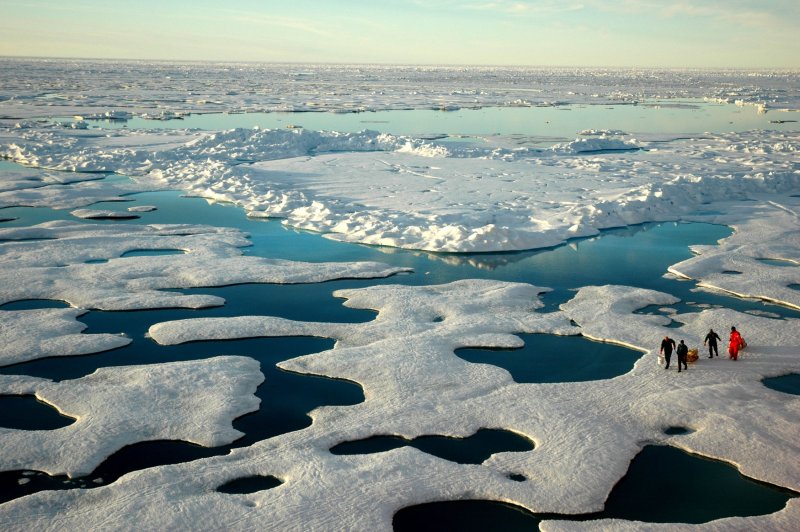Scientists tread carefully through a seemingly endless landscape of ice, sea, and meltwater in the Canada Basin of the Arctic on July 22, 2005. The blanket of ice coating Earth's northernmost seas was thin and ragged in July, setting a record low for sea ice extent for the month. Sea ice stretched across only 3.06 million square miles whereas the long-term July average is 3.9 million. Scientist note that this breakup of ice is a result of global warming. Photo made from the U.S. Coast Guard Icebreaker Healy. UPI/Jeremy Potter/NOAA |
License Photo
UNIVERSITY PARK, Pa., Aug. 1 (UPI) -- Arctic sea-ice loss, reducing coverage to the lowest point in 1,500 years, is having widespread effects on wildlife, biologists say.
"Our team set out to explore the 'domino effect' of sea-ice loss on marine animals, as well as on land-dwelling species living adjacent to ice," Penn State biologist Eric Post said. "Arctic sea ice should be thought of as a biome or an ecosystem and the effects of melting and warming on microorganisms living under ice in this biome already have received much attention.
"However, those animals living near the ice likely are feeling the effects, as well," Post said.
After reaching its record low in August of 2012, sea ice is expected to continue to melt at an accelerating rate.
"Over the entire period covered by the record, arctic sea ice has declined by more than 86,000 square kilometers (33,200 square miles) -- a space slightly larger than the state of South Carolina -- per year," Post said. "That's an area of critical habitat for many species and the rate of loss is increasing."
Arctic sea-ice loss will affect relationships among algae, plankton, whales and terrestrial animals such as caribou, arctic foxes and walrus, he said.
"By viewing sea ice as essential habitat and a substrate for important species interactions, rather than as a lifeless blank surface, its loss as a result of warming becomes a rather stunning prospect," Post said.















